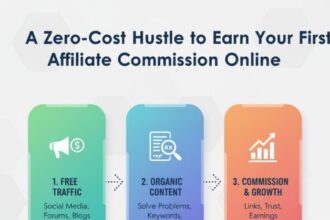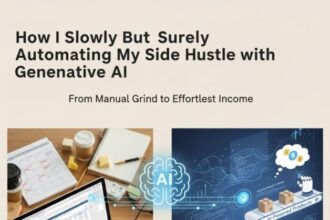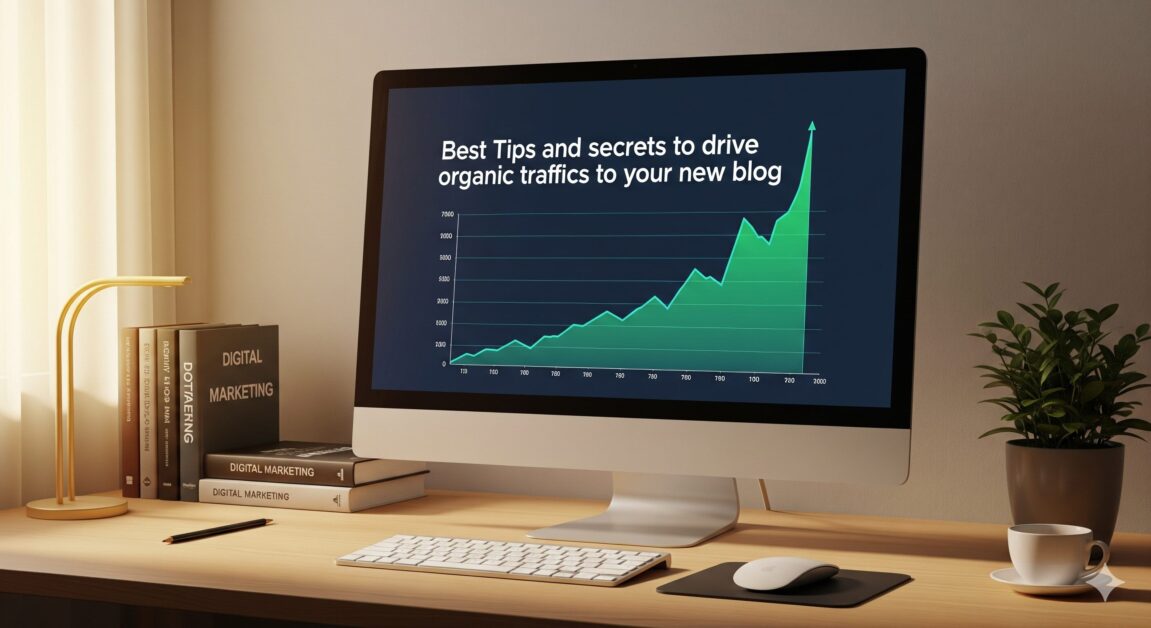How to Write Long-Form Content That Ranks and Converts
The word count sat at the bottom of my screen, mocking me. 4,917.
I had done it. I had written the single most comprehensive, detailed, and soul-crushingly exhaustive history of the office stapler that had ever been created. It was my masterpiece. My magnum opus. I had charts. I had patent diagrams. I had a section on the cultural significance of the Swingline Model 27. I am not making this up.
This, I thought, was it. This was “long-form content.” This was the “pillar post” the gurus were always screaming about. I was so proud. So sure that this was my ticket. That Google would see my monumental effort and shower me with traffic and praise.
I hit “publish,” leaned back in my chair, and waited for the world to notice me.
A week passed. I checked my stats. Three visitors. Three. And I was two of them. The third was probably my dad, who later asked me if I was feeling okay.
I didn’t want to throw my computer out the window. I wanted to throw myself out the window. All that work. All that time. All that research about staplers. For nothing. It was in that moment, in the smoldering wreckage of my own absurd ambition, that I knew I was doing something catastrophically wrong. I had no earthly idea how to write long-form content that ranks and converts. I was just writing… long. And I had a sickening feeling that “long” was not the same thing as “good.”
So, I did what any broken blogger would do. I opened a new document, and I started trying to figure out where I had gone so horribly, horribly wrong.
Down the Rabbit Hole of “Bigger is Better”
My whole disastrous journey started with one seductive little phrase that I read on some marketing blog: “Word count is a ranking factor.”
That was it. That’s all my desperate, beginner brain needed to hear.
It was like a starting gun went off. From that moment on, I was in a race. A race against every other blog on the internet. And the only thing that mattered was the word count. My entire approach to writing became a relentless pursuit of “more.” It wasn’t about being better. It wasn’t about being more helpful. It was just about being longer.
This was a terrible, horrible, no-good, very bad idea. And it led me to some very dark places, creatively speaking.
How I Became a Master of Writing Nothing at All
To hit my new, arbitrary word count goals (3,000 words! 4,000! 5,000!), I had to learn how to write a lot without actually saying anything. I became a connoisseur of fluff. A master of verbal padding.
My introductions became these monstrous, five-paragraph preambles that cleared their throat for a solid page before getting to the point. I’d use three ridiculously complex sentences to explain a simple concept that needed only one. I would go off on these long, meandering tangents, telling personal stories that had a flimsy, paper-thin connection to the actual topic. “Speaking of staplers, that reminds me of a time in third grade when…” It was awful.
I thought I was creating an in-depth article. I thought the sheer weight of my words would convey authority. What I was actually creating was a dense, boring, unreadable brick of text. A digital sedative. I was so focused on impressing the Google robot that I completely forgot about the actual human being who might, by some terrible accident, end up trying to read my work.
I Had No Idea What “Skimmable Content” Meant
While I was busy building these verbal pyramids, I was completely ignorant of one of the most fundamental truths of the internet: People. Don’t. Read.
They don’t. Not really. Not like they read a novel. They scan. They skim. They bounce around the page like a crazed hummingbird, their eyes darting, hunting for the one piece of information they actually need.
And my blog? It was the least skimmable place in the history of the web. It was a solid, unbroken wall of gray text. No subheadings to guide the eye. No bold text to highlight key points. No images to break up the monotony. It was a reader’s nightmare.
It didn’t matter if I had the cure for cancer buried in paragraph 42. No one was ever going to find it. The page experience was terrible. I was inviting people into my house and then turning off all the lights and asking them to find their way around by feel. It was just plain rude.
The Slow, Painful Undoing of Every “Rule” I Thought I Knew
My stapler post was a turning point. A failure so magnificent, so complete, that it forced me to question everything. I couldn’t blame bad luck. I couldn’t blame Google. The failure was all mine.
So I stopped writing. And I started reading. I went to the blogs that were actually succeeding with long-form content—the ones that I loved to read, the ones that kept me on the page—and I dissected them like a frog in biology class. I wanted to understand their anatomy. What made them work?
And as I did this, I started to realize that nearly every “rule” I had been following was a myth. A lie. A trap for eager, desperate beginners like me.
The “Word Count” Myth: Longer Isn’t Better. Comprehensive Is Better.
This was the big one. The original lie that sent me down the wrong path. I thought I was being rewarded for length. I was chasing a number.
But the real winners weren’t just long. They were complete.
A great 4,000-word post isn’t 4,000 words long because the author was trying to hit a word count. It’s 4,000 words long because that’s what it took to answer every single possible question a reader could have about that topic. It addressed the main question, and then it anticipated and answered all the follow-up questions, too. It was a one-stop shop. It was the end of the user’s search journey.
Google wasn’t rewarding the length. It was rewarding the satisfaction that the length created. My stapler post was long, but it wasn’t complete. It was just… fat. I had created a bloated, empty information-calorie mess.
The “Smarty-Pants” Myth: Sounding Smart Isn’t as Good as Being Understood.
I was so insecure as a new blogger that I thought I needed to sound like an academic. I used the biggest words I could find. I wrote in a stuffy, formal tone. I thought this made me seem authoritative.
What it actually made me seem was insufferable.
The best long-form content wasn’t academic at all. It was wildly conversational. It felt like talking to a friend who was just way, way more obsessed with a particular topic than you were. It used simple words. Short sentences. Contractions. It was, in a word, human. They weren’t focused on impressing me with their vocabulary. They were focused on making sure I understood them. Their commitment to reader engagement was baked into every simple, direct sentence.
The “Keyword” Myth: Stop Stuffing and Start Answering.
Oh, the keyword stuffing. I’m so embarrassed. I thought SEO was about signals. Magic words. I’d read about keyword density, and I took it to a truly insane extreme. “This stapler is a great stapler because as far as staplers go, this is a stapler that does its stapling job well.” It was a mess.
Then, of course, I over-corrected. I decided SEO was dumb and for robots and I, an ARTIST, would simply write from the soul. That didn’t work either.
The real shift came when I stopped thinking of keywords as words and started thinking of them as questions. The phrase “best running shoes for flat feet” isn’t just a string of words. It’s a human being in pain, looking for relief. My job isn’t to repeat that phrase over and over. My job is to answer the desperate question behind it with as much empathy and detail as possible. When you do that, the keywords just… show up naturally.
My “This is a Restaurant, Not a Factory” Aha! Moment
So I knew what I was doing wrong. Don’t be boring. Don’t be a pompous academic. Don’t write for robots. But I still didn’t know what I was supposed to be doing right. The “how” was still a mystery.
And then, as I was staring at my outline for another potential monstrosity, it hit me. My entire metaphor for what I was doing was wrong.
I thought I was a factory worker, and my job was to produce a product: a blog post. My goal was volume. My goal was efficiency. My goal was to crank out the widgets.
But a great piece of long-form content isn’t a widget from a factory. It’s a meal from a five-star restaurant.
I Stopped Being an Assembly Line Worker and Became a Chef
This idea unlocked everything for me. It completely changed my relationship with my work.
Think about a factory worker. They’re disconnected from the end user. They just do their one repetitive task over and over. Their job is measured in units produced.
Now think about a great chef. A great chef is obsessed, passionately, with the person who is going to eat their food.
The chef thinks, “What is my diner’s mood tonight? What problem are they trying to solve—are they celebrating, or are they just looking for a quick, comforting meal?” The chef plans every course. They source the best ingredients. They think about the plating, the atmosphere, the service. The entire experience is designed around the guest.
This is the whole secret. Stop being a factory worker, cranking out “content.” Start being a chef, creating an experience. My whole approach to search intent shifted. It wasn’t about guessing a keyword anymore. It was about deeply understanding what my guest was hungry for. As I talked about in a prior post, [My Blog Is a Diner, And I’m Just the Cook], this shift in identity makes the hard work feel like an act of love.
The Power of a Menu (aka, a Good Freaking Outline)
A great restaurant doesn’t just wing it. It has a menu. A carefully thought-out, well-structured menu that guides the diner from appetizer to dessert.
That menu is your content outline. This is now the most important part of my entire process. Before I write a single sentence, I build the entire skeleton of the post. It is a deeply detailed roadmap of the entire “meal.” Each heading and subheading is a different course, a different dish. It’s what keeps me on track. It’s what prevents me from going off on those long, self-indulgent tangents about staplers. The outline is my recipe. If I stick to the recipe, the final dish will be coherent and satisfying.
My Messy, Real-Life “How I Actually Do This Now” System
So what does my process actually look like today? It’s not a clean, 7-step formula. It’s a chaotic, coffee-fueled ritual that is more like a chef’s frantic prep before dinner service than a calm writing session. But it’s my system. And it’s what keeps me from repeating my past failures. This is my messy, honest guide on how to actually do this thing.
1. I Spend Way More Time “Shopping” Than “Cooking”
The writing is the easy part. The real work happens before I even open a document. It’s all in the planning. My mise en place.
My Customer Avatar: I get weirdly specific about the one person I’m cooking this meal for. Their fears, their frustrations, their secret hopes.
The Outline is My Everything: I will spend hours, sometimes days, just building the content outline. I use a tool like Dynalist to map out every single section. What’s the appetizer (intro)? What are the main courses (the body)? What’s the dessert (conclusion)? Every piece has a purpose.
Pre-Chopping My Veggies: I gather my research, my stats, my links, my quotes, and my image ideas and dump them all into my outline. So when it’s time to actually write, I’m just assembling, not hunting.
2. The First Bite Has to Be Amazing
You can’t start a great meal with a boring, stale breadstick. The introduction is everything. It has to hook the reader immediately.
I now have two goals for every intro I write:
Empathize with their pain instantly. “I know that feeling of staring at a blank page…”
Make a specific, bold promise. “In this post, you’re going to learn the exact system I use to…”
I want them to feel seen and confident that I can solve their problem within the first two paragraphs.
3. I Serve Tapas, Not a Giant Turkey Leg
The main body of the post has to be incredibly easy to digest. Nobody wants to be served a whole roast pig and told to just “dig in.” You have to carve it up for them.
Here’s my “carving” strategy:
The Two-Sentence Rule: I try my absolute best to keep my paragraphs to one or two sentences. Maybe three, if I’m feeling feisty. It creates so much white space and makes the page feel light and airy.
Subheadings Are My Friends: They break up the visual monotony and act as signposts, letting the reader know what’s coming next.
Bold is My “Listen Up!” Tool: I use bolding to highlight the most crucial, can’t-miss sentences in a section. This is for the skimmers. I’m serving them the highlights.
4. I Always Ask, “What’s Next?”
A good host never lets the conversation just die. They don’t want the party to just fizzle out into awkward silence. The end of my post is now just the beginning of the next conversation.
My conclusion is where the conversion optimization happens, which sounds like a sleazy marketing term but is really just being a good host.
I always ask a direct question to get the comments rolling. That’s real reader engagement.
I always suggest another “dish” they might like, linking to another relevant post on my site. This is great for my readers and for me. (This article on internal linking from Backlinko really drilled this home for me).
I always offer them a “doggie bag”—a chance to join my email list so I can send them more good stuff later.
So, Am I Cured? Am I a Master Chef Now? Not a Chance.
I am still a profoundly weird guy who knows way too much about staplers. I still struggle. I still get tempted by my own long, rambling tangents. I still have to fight the urge to sound smarter than I am.
But I’m not lost anymore. I have a guiding philosophy. A north star. I am not a writer. I am a host. I am not building articles. I am throwing little dinner parties for people who need help.
And it has changed absolutely everything. My analytics aren’t a flat line anymore. They’re alive. People are actually coming to my parties. And they’re sticking around for dessert. And that, more than any ranking or word count, feels like a success.
So, what’s the one big, complicated, intimidating meal that you know, deep down, you need to start prepping for your readers?












































